A little video demonstration for a gold fish character rig featuring procedural animation and dynamics functionality ...Enjoy :D
Gold Fish Rig Demo from Suchan Bajracharya on Vimeo.
Sunday, December 19, 2010
Sunday, December 12, 2010
Thursday, December 2, 2010
Balloo "Toony Ball Rig" Updated ...
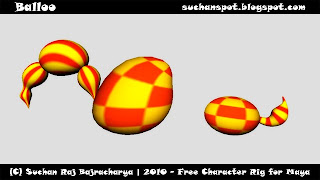 After all, it's time for a little update !!!
After all, it's time for a little update !!!Updated with new balloo tail and some more added features. Be sure to check it out !
Enjoy the Rig and Happy Animating and yeah comments, feedbacks and credits are much appreciated ... :)
Click the Image above for the link to download the rig and if you want feel free to watch this boring video demo ... XD
Balloo Rig Demo from Suchan Bajracharya on Vimeo.
Tuesday, November 30, 2010
Disney legend Glen Keane interview :)
Tuesday, November 23, 2010
Sinka Character Rig
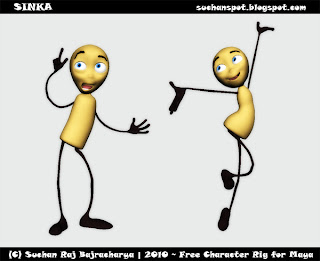
Hellooo Everyone, here comes Sinka "The Stick Character" !!!
A little something for all of the animation lovers and the entire community that is now freely available. Enjoy the Rig and Happy Animating and yeah comments, feedbacks and credits are much appreciated ... :)
Click the Image above for the link to download the rig and watch the video demo below just in case XD
Sinka Rig Demo from Suchan Bajracharya on Vimeo.
Credit :
Design/Concept/Character Creation : Escape Animation Nepal
Thursday, November 18, 2010
Manfred
Nice style, simple idea, clear characters. Pretty solid for student work.
'Manfred' an animated short by Arjen Klaverstijn from Arjen Klaverstijn on Vimeo.
'Manfred' an animated short by Arjen Klaverstijn from Arjen Klaverstijn on Vimeo.
Thursday, November 4, 2010
Friday, September 17, 2010
A Tutorial About W@lk by April Peter
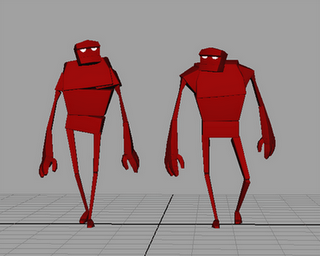 Interesting and definitely a different approach for a walkcycle animation ... This tutorial is meant for both 3D and Flash "cut-out" animation and it sure deserves a sneak peek :)
Interesting and definitely a different approach for a walkcycle animation ... This tutorial is meant for both 3D and Flash "cut-out" animation and it sure deserves a sneak peek :)April's Website
April's Blog
Wednesday, August 25, 2010
Sunday, July 25, 2010
Leave Britney Alone parody! Lol!
Tuesday, July 20, 2010
Thursday, June 10, 2010
Saturday, June 5, 2010
Procedural Chain Setup
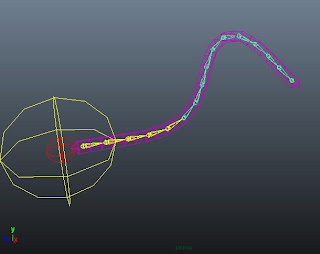 Here is a little video tutorial/demo on creating a procedural joint chain animation setup ... XD
Here is a little video tutorial/demo on creating a procedural joint chain animation setup ... XDEnjoy and feel free to comment, also the script mentioned in this video is available here ...
Wednesday, June 2, 2010
Maya Didi
Tuesday, June 1, 2010
Cool Stuffs :D
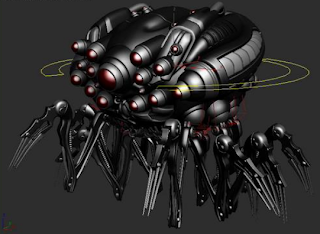 Here are some really cool technical R&D works done by Felix Joleanes ... His site have some really wonderful experimentation ... Check it out :)
Here are some really cool technical R&D works done by Felix Joleanes ... His site have some really wonderful experimentation ... Check it out :)www.joleanes.com
Tuesday, May 25, 2010
Friday, May 7, 2010
Monday, May 3, 2010
Monday, April 19, 2010
Sunday, March 21, 2010
The Making of Descendants
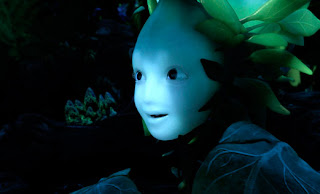 The creators of the most astounding visual story have come together to present the tutorial to the making of 'Descendants'. Done as a final year project at the Filmakademie, this has been on the festival circuit for a year or so. Click the image...
The creators of the most astounding visual story have come together to present the tutorial to the making of 'Descendants'. Done as a final year project at the Filmakademie, this has been on the festival circuit for a year or so. Click the image...Also,
Here is a behind the scene sneak peek ...
Descendants from Goro Fujita on Vimeo.
The Making of PIVOT
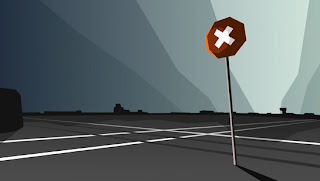 Here is behind the scene making of a really cool animated short "PIVOT" posted on cgchannel !!! Click the image above ...
Here is behind the scene making of a really cool animated short "PIVOT" posted on cgchannel !!! Click the image above ...If you want to know more about the process of making your own 3d short here is the link to their development blog.
Wednesday, March 17, 2010
Tuesday, March 9, 2010
Monday, March 8, 2010
Posing Character For Animation
Saturday, March 6, 2010
Animator's Important Milestone ...
Studio Etiquette: Keep your Ego in check
By: Jamy Wheless, Mentor, AnimationMentor.com
What makes a good animator? Is it getting great poses? Understanding timing? Paying attention to arcs? How about being a good actor? Actually, it's all of this and more. But one of the key ingredients not discussed often enough is having a positive attitude and being able to work with others.
I've worked with very talented animators whose egos have hurt their careers. The mindset of, "I deserve this or that" or "I don't need to work with a team - I can do it on my own" will eventually lead to no job. Lou Holtz once said, "All life is -- whether it's in a job or a home or on a football team -- is getting other people what they need." Plain and simple.
The Director needs an Animation Supervisor to listen and get him what he wants in a shot. The Animation Supervisor needs the animator to deliver a great performance that helps tell the story. The animator needs to collaborate with other animators and be open to suggestions to do his best work. The animator needs to be able to take constructive criticism from others. The animator needs technical support to help him animate faster and get the job done on time.
It takes a team of people to get each other what they need.
In order to improve and become a better animator one needs to set the ego aside and be open to learning something new every day. My friend and I have a saying at work, "Is it about you or is it about the work?" In other words, are you giving your all for a bigger cause or are you more concerned about yourself and what you get out of it.
So how do we keep our egos in check and become better animators each day? It all begins with the right attitude. My own work began to improve when I made a decision years ago to have a positive attitude regardless of the circumstances. I made a conscious decision to keep a positive attitude and to influence others every day. Over time, my work habits improved and I looked forward to going to work and serving others. It takes a daily commitment to keep my attitude right through the course of a week. When my attitude turns negative, which can easily happen, I have to check myself and ask the question, "Is it about YOU or the work?" Usually when this happens, it's more about my ego and what I want rather than what the team needs.
Another rule to live by is to treat others the way you want to be treated. Living by this rule helps me focus in on each person and then as I imagine if I were them I ask myself, "What can I do that would help them get what they need to be successful?" Since animation is a team effort, by applying this rule to your daily routine you not only inspire others but you'll find yourself more inspired as you do your work. It becomes contagious and before long everyone's work has improved.
In summary, I've realized that the right attitude is more important than all the talent in the world. My personal belief is 20% talent and 80% attitude will take you far in life. You have a choice everyday regarding your attitude and how you conduct yourself. Believe you can improve yourself and become that person you desire to be. Ralph Waldo Emerson once said, "What lies behind us and what lies before us are tiny matters compared to what lies within us."
Change your mindset and have the right attitude and great things will come.
This article was brought to you by AnimationMentor.com, The Online Animation SchoolTM .
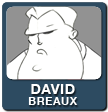 Critiques & Opinions
Critiques & Opinions
Often in animation we are subjected to critiques -- most likely daily. I try to impress on my students the importance of learning all the principals of animation, but temper it with a bit of realism. It's a simple fact that everyone has an opinion, and no matter how good you are or how long you've been working there is always something new to learn. So seek out criticism, or take any thrown your way. Take what everyone says... Weigh it against what you've learned up to that point, and if a particular problem, or complement keeps cropping up, there must be some truth too it.
I’m sure we've all met someone who isn't crazy about our work for one reason or another.... but that doesn't mean you can't get something from their opinion. It's kinda like learning to fight... The more you mess up, the more you learn what not to do.
Animation is an art form, and as artists we all have our own sense of aesthetics. Don't take criticism as a punch to the gut -- most likely it isn't personal. Strive to do your best work, and remember it isn't your show/game. You are providing a service. If a director wants something, and you think it’s a bad decision or a problem, make it known to your supervisor or animation director, but don't fight it. If they elect to follow your opinion great, you’re a hero for pointing it out. If not don't latch on like a pit bull, leave it at that and do the best you can given the constraints. I think that makes a good honest animator: you are showing that you recognize issues, care about your work, and confront them head on, but are still a team player.
Technique
As a student learning animation, which most of us are until the day we kick the big one, we meet lots of other people doing the same work...yet everyone seems to have their own flavor of "How to do it?" What I like to do personally, and also tell my students is, whomever is currently teaching you is who you listen too.
In other words, if you are in school do what any given teacher tells you at that time -- learn what they have to give. When you move on from them, do the same with the next teacher. "But everyone does it differently, won't it get confusing?" Ahhh ...no, what you are doing is focusing on what you have to learn...not looking down the road.
Before you know it, you will have picked up a ton of knowledge and techniques, the next step is deciding what works for you and what doesn't.
This is where each animator, like some home brew from Grannies barn, picks their ingredients and heads off into the world. The only difference in animation is as we work with new director, supervisors, and animators.... we are constantly show different ways of the force. Take that ever-growing list and give it a fair tryout and see if you can incorporate it into your working method. Maybe it speeds you up, maybe it slows you down, maybe your work jumps to that next plateau. It's a simple fact that you will grow, and improve as an animator always but it won't be a simple strait shot to the goal.
By: Jamy Wheless, Mentor, AnimationMentor.com
What makes a good animator? Is it getting great poses? Understanding timing? Paying attention to arcs? How about being a good actor? Actually, it's all of this and more. But one of the key ingredients not discussed often enough is having a positive attitude and being able to work with others.
I've worked with very talented animators whose egos have hurt their careers. The mindset of, "I deserve this or that" or "I don't need to work with a team - I can do it on my own" will eventually lead to no job. Lou Holtz once said, "All life is -- whether it's in a job or a home or on a football team -- is getting other people what they need." Plain and simple.
The Director needs an Animation Supervisor to listen and get him what he wants in a shot. The Animation Supervisor needs the animator to deliver a great performance that helps tell the story. The animator needs to collaborate with other animators and be open to suggestions to do his best work. The animator needs to be able to take constructive criticism from others. The animator needs technical support to help him animate faster and get the job done on time.
It takes a team of people to get each other what they need.
In order to improve and become a better animator one needs to set the ego aside and be open to learning something new every day. My friend and I have a saying at work, "Is it about you or is it about the work?" In other words, are you giving your all for a bigger cause or are you more concerned about yourself and what you get out of it.
So how do we keep our egos in check and become better animators each day? It all begins with the right attitude. My own work began to improve when I made a decision years ago to have a positive attitude regardless of the circumstances. I made a conscious decision to keep a positive attitude and to influence others every day. Over time, my work habits improved and I looked forward to going to work and serving others. It takes a daily commitment to keep my attitude right through the course of a week. When my attitude turns negative, which can easily happen, I have to check myself and ask the question, "Is it about YOU or the work?" Usually when this happens, it's more about my ego and what I want rather than what the team needs.
Another rule to live by is to treat others the way you want to be treated. Living by this rule helps me focus in on each person and then as I imagine if I were them I ask myself, "What can I do that would help them get what they need to be successful?" Since animation is a team effort, by applying this rule to your daily routine you not only inspire others but you'll find yourself more inspired as you do your work. It becomes contagious and before long everyone's work has improved.
In summary, I've realized that the right attitude is more important than all the talent in the world. My personal belief is 20% talent and 80% attitude will take you far in life. You have a choice everyday regarding your attitude and how you conduct yourself. Believe you can improve yourself and become that person you desire to be. Ralph Waldo Emerson once said, "What lies behind us and what lies before us are tiny matters compared to what lies within us."
Change your mindset and have the right attitude and great things will come.
This article was brought to you by AnimationMentor.com, The Online Animation SchoolTM .
What Makes a Good and Honest Animator
Often in animation we are subjected to critiques -- most likely daily. I try to impress on my students the importance of learning all the principals of animation, but temper it with a bit of realism. It's a simple fact that everyone has an opinion, and no matter how good you are or how long you've been working there is always something new to learn. So seek out criticism, or take any thrown your way. Take what everyone says... Weigh it against what you've learned up to that point, and if a particular problem, or complement keeps cropping up, there must be some truth too it.
I’m sure we've all met someone who isn't crazy about our work for one reason or another.... but that doesn't mean you can't get something from their opinion. It's kinda like learning to fight... The more you mess up, the more you learn what not to do.
Animation is an art form, and as artists we all have our own sense of aesthetics. Don't take criticism as a punch to the gut -- most likely it isn't personal. Strive to do your best work, and remember it isn't your show/game. You are providing a service. If a director wants something, and you think it’s a bad decision or a problem, make it known to your supervisor or animation director, but don't fight it. If they elect to follow your opinion great, you’re a hero for pointing it out. If not don't latch on like a pit bull, leave it at that and do the best you can given the constraints. I think that makes a good honest animator: you are showing that you recognize issues, care about your work, and confront them head on, but are still a team player.
Technique
As a student learning animation, which most of us are until the day we kick the big one, we meet lots of other people doing the same work...yet everyone seems to have their own flavor of "How to do it?" What I like to do personally, and also tell my students is, whomever is currently teaching you is who you listen too.
In other words, if you are in school do what any given teacher tells you at that time -- learn what they have to give. When you move on from them, do the same with the next teacher. "But everyone does it differently, won't it get confusing?" Ahhh ...no, what you are doing is focusing on what you have to learn...not looking down the road.
Before you know it, you will have picked up a ton of knowledge and techniques, the next step is deciding what works for you and what doesn't.
This is where each animator, like some home brew from Grannies barn, picks their ingredients and heads off into the world. The only difference in animation is as we work with new director, supervisors, and animators.... we are constantly show different ways of the force. Take that ever-growing list and give it a fair tryout and see if you can incorporate it into your working method. Maybe it speeds you up, maybe it slows you down, maybe your work jumps to that next plateau. It's a simple fact that you will grow, and improve as an animator always but it won't be a simple strait shot to the goal.
Thursday, February 25, 2010
The Alchemy of Animation
Imagine you're a famouse actor who has just been hired to appear in a big - budget movie. You read the script, study your lines, and do wardrobe and hair tests and make up. On your first day of shooting, you arrive on the movie set, but just as the cameras are about to roll, the director says, "Here's a pencil, I want you to draw your performance instead." That's what an animator does every day ...
"Creating Life"...
1. THINK ...
3. ANIMATE ...
"Creating Life"...
1. THINK ...
- What is the purpose of this scene in the movie?
- What is the most entertaining way to show the action?
- What is the character thinking and feeling?
- Where is this in the plot?
- Why am I here ? I can't do this...
- Visualise the scene in your head first; animate last.
- Act out the scene... What does it feel like physically?
- How does the scene connect with the shots before it and after it?
- Do you understand the layout, set design, prop location, and proposed camera moves?
- Do you know the overall mood, lighting, and time of day ?
- What is the emotion in this scene?
- What are the subtleties of emotion in the vocal performance and dialogue?
- Plan out all the patterns of movement with thumbnail sketches.
- Stock up on Coffee, close your door, and go to work.
3. ANIMATE ...
- Strive for the most effective and clearest extreme poses.
- Where do you want the audience to look?What is the rhythm of this scene (fast vs. slow, kinetic vs. restful)?
- Dont't move anything without a purpose. Holding still is just as important as moving.
- Let the whole character tell the story, not just the eyes or head.
- Don't be lazy and let the computer do the work. Computers don't animate, people do. If the computer software creates a timing or movement that you don't like, don't accept it. Get in and change it until it's right.
- Think clarity. Could you follow what's happening in the scene even if the character were in silhoutte?
- Don't just illustrate dialogue; illustrate emotions, thoughts, and ideas.
- Simplify dialogue into phrases, and illustrate the dominant vowel and consonant sounds, especially for fast dialogue. (We don't flap our whole mouth with every word of dialogue. We phrase our speech into simple, economical patterns of movement.)
- Changes of expression are major points of interest to audience. Make sure the expression is clearly visible and that it reads clearly as it changes.
- Don't fall in love with your first effort. Revisit your scene and look again.
- Simplify, simplify, simplify: most new animators move the character too much without letting the character think, absorb, and reflect. Be critical and edit out movement that doesn't contribute to the performance.
- Look at the secondary actions in a scene (overlapping fabric, hair). Do they contribute to the idae of the scene or just distract from it?
- Is the character alive? Animation is not about movement, it's about life. Breathe life into a scene both visually and emotionally.
- Look again clarity of communication. the audience only has one twenty - fourth of a second to read an individual frame of animation, so it has to read really clearly.
- Don't hide. Animation is a team sport. Show your work to the director and other animators and listen to their reaction. It doesn't mean you have to make every change they recomment, but fresh eyes always help to plus a scene.
Thursday, February 18, 2010
Meindbender Studio :: Production Focus
Tuesday, February 9, 2010
File Referencing in Maya
 File Referencing in Maya is invaluable for any animation pipeline, especially projects involving characters. To get the most out of reference, following a few key steps can save a lot of head ache later on down the line.
File Referencing in Maya is invaluable for any animation pipeline, especially projects involving characters. To get the most out of reference, following a few key steps can save a lot of head ache later on down the line.First off, what is file referencing and why is it so valuable?
Referencing allows you work on temporary assets that can be updated in your existing file throughout the project pipeline. This process can blur the point where one artist's work is done and the next can start, as in the model is finished and is now ready to rig. In this write up, I'll be referring to Character Rigs being the file that's referenced, however you can also reference environments, light setups and many other files.
How referencing applies to an animation pipeline.
You've just received a new character rig and are assigned a new animation shot. So you open the rig file, start setting keys and crafting your animation. A few hours pass when you realize that neck control doesn't work,the right fingers are not bound to the joints, and the UVs are all goofed. So now, to save your animation, you'll have to fix a rig that has been animated and manipulated out of base pose in order to move forward. Not to mention, you'll need to redo these changes or strip out the animation to set the rig back to default, to prevent having to redo these changes on the next animation. A cleaner way of working in this situation is to use File Referencing. With the rig referenced into the animation file, you can save your existing animation, go fix the rig in its own file, reopen your animation and the changes apply themselves.
How referencing can save time.
Once a character model is approved or even their proportions are approved, an Animation rig can be created using that base mesh. This will not be the final rig with all the bells and whisles but will be enough to allow the animator to start previs or blocking in animations. Now you have three different facets of the pipeline working at the same time, instead of "one ends, the other begins". While the model is being finalized, textured, and so on, the rig can be updated accordingly with secondary elements, all while the animation is being created. Once the model is updated in the rig, the next time the animator opens their animation, the latest rig and model will already be there. This sort of overlap can last all the way through a project. Facial animation, mesh swapping on existing rigs, spot fixes on the bind, and other updates can be seen on existing animations all with out transferring the animation to a new rig or having to go in and fix individual files. All and all, this gives the modeler more time to work on the model and see how it's being used, allows the setup artist to build to the animator's need and work within a clean, non animated rig file, and lastly gets rigs to the animators faster to produce initial work and test the setups the technical artists are creating. Along with allowing more artists to work sooner, referencing saves time by creating smaller file sizes, thus reducing save/load times. Since the rig file is not actually in the animation file, the size of the animation file is very small. You are no longer saving the rig in each file over and over, even more beneficial if the scene has more then one character. This same process is great for a heavy environment. Since the animator will probably only need to know the ground plane and the objects the character interacts with, having tons of buildings and set dressing will only slow down the playback and bloat the file size.
The importance of a clean Rig file that's being referenced.
Before you start referencing, it's best to have a clean file that's brought into the animation scenes. Here are some general guide lines to touch up a rig file to make it as solid as possible to prevent errors and breaking.
Making updates seemless in the pipeline.
Now that you have a clean Rig file that's ready to be referenced, it's time to make sure that any updates you do will allows go to the animator's file. The easiest way to make this possible is by only having a single Rig file per character, named accordingly. The rig file, "Ogre_Character_Rig.ma" should be your master rig file naming scheme. Though it may be tempting to start putting version numbers on the rig's file name as its been updated, this will actually cause more headache then its worth. Heres why:
How to setup a File Reference.
As your about to start an animation, you should have a character rig file as a seperate file, for this write we'll call the rig file "Ogre_Character_Rig.ma". So, to create a reference:
So what have we done and why.
By resetting the options, this clears any custom settings that might have been set. Once you get familiar with this process you will no longer need to do this. However, for this example this makes sure we're all using the same settings. Next we resolved all conflicting nodes with a string instead of the file name. There are a number of reasons for this, such as:
The Reference is Set, let Animation begin.
At this point, animation can start and whatever changes are made to the asset in the mean time will be seen as the rig is updated. Some more details to keep in mind:
Some final notes and work arounds for Referencing.
Rig File > Animation File > Lighting File
Having the files get deeper then this, errors start occuring with the sheer number of prefixes and layers of edit seen in each file. In this case, less is more, so try to work as clean and optimal as possible.
Closing thoughts.
As seen above, referencing can seem to be a daunting task, but I assure you, it will make your life easier. Having a smooth pipeline and allowing artists longer to work and adjust as the project calls is worth the time spent at the beginning. A stitch in time, so to speak.
Source ... Kiel Figgins !
Click here for his post
Friday, January 22, 2010
Toony Quadruped Rig Demo
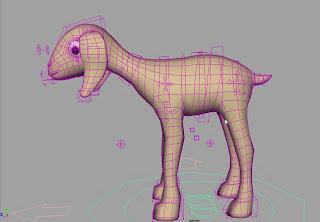 Hey everyone, created this little rig demo for a goat character from a little project "Sacrifice" from the previous post that I was involved in... Check it out ... click the image above !
Hey everyone, created this little rig demo for a goat character from a little project "Sacrifice" from the previous post that I was involved in... Check it out ... click the image above !
Sunday, January 10, 2010
Sacrifice
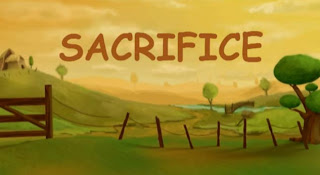 Here is a little short titled "Sacrifice"... by my friend and his team ! This piece will be screened in many animation and short film festival. I did the rigging part !
Here is a little short titled "Sacrifice"... by my friend and his team ! This piece will be screened in many animation and short film festival. I did the rigging part !Escape Animation
Landscape 101
Friday, January 8, 2010
The Third & The Seventh
Thursday, January 7, 2010
Subscribe to:
Comments (Atom)









.jpg)


